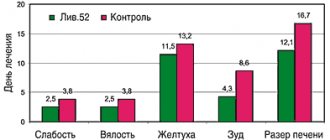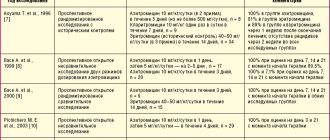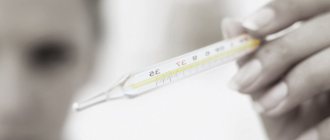Indications and contraindications for treatment with Pantogam
The instructions indicate certain pathological conditions for which the use of the drug is recommended. Pantogam tablets are approved for use in patients over 3 years of age:
- with reduced memory and mental performance, organic lesions of the brain, including head injury and the results of experienced neuroinfections;
- Westphal-Wilson, Unferricht-Lundborg disease, a combination of progressive choreic hyperkinesis and mental disorders;
- pathologies associated with changes in the cerebral vessels of the brain;
- epilepsy, which provokes inhibition of mental processes;
- neuroleptic syndrome, enuresis, frequent urination, urge incontinence;
- schizophrenia with organic cerebral insufficiency.
For children over three years of age, the medicine is recommended:
- with different degrees of severity of developmental delay: motor, mental, speech;
- tics, stuttering, cerebral palsy;
- hyperactivity syndrome, encephalopathy of the perinatal period.
Pantogam is contraindicated in patients:
- under 3 years old;
- women during pregnancy and breastfeeding;
- with individual allergies to the component composition.
The drug is not used for acute kidney diseases with a complex course.
Most patients undergo treatment without complications. Occasionally, adverse reactions may occur in the form of skin rash, runny nose, and conjunctivitis. If unusual symptoms appear, Pantogam should be discontinued or the initial dosage reduced.
Sometimes patients complain of problems with sleep phases, daytime sleepiness, or extraneous noise in the head. These clinical manifestations are short-term and disappear on their own after a few days from the start of therapy. Do not require changes to the treatment regimen.
Application area
For what purpose and why do specialists prescribe Pantogam to their patients:
- impairment of performance, psycho-emotional overload;
- therapy and prevention of extrapyramidal syndromes due to the use of antipsychotics;
- disturbances in active movement as a result of decreased muscle tone;
- cognitive problems due to TBI and neurotic disorders;
- neuroses with tics, stuttering, inorganic encopresis;
- changes in blood vessels as a result of the development of atherosclerosis;
- epilepsy with convulsive syndrome;
- schizophrenia with retardation;
- urinary disorders (urinary incontinence, enuresis);
- developmental delay in children, disorders of motor activity, speech, formation of school skills;
- mental retardation with behavioral disorders;
- different forms of cerebral palsy;
- damage to brain functions in children from the first day of life.
Methods of therapy, dosages from the instructions for Pantogam
The tablets are taken half an hour after meals, in the first half of the day. Procedures should not be carried out after 16.00. The instructions for Pantogam mention the following conditions:
- a single dosage for adults does not exceed 0.25-1 g, daily dosage – 1.5-3 g;
- for children from the age of three - from 0.25 to 0.5 g per procedure, 0.75-3 g per day;
- therapy lasts 1-4 months, the period can increase to six months, after a 3-6 month break, manipulations can be resumed.
Daily dosages depend on the type of pathological process detected:
- combined treatment of epilepsy allows taking Pantogam in an amount of 0.75-1 g per day for one calendar year;
- when fighting neuroleptic extrapyramidal syndrome - 3000 mg for 2-3 months;
- extrapyramidal hyperkinesis with genetic diseases of the nervous system – 0.5-3 g for more than 4 months;
- consequences of neuroinfections and head injury – up to four times a day, 0.25 g;
- asthenia, mental and physical stress – 0.25 g three times a day;
- extrapyramidal syndrome due to antipsychotics - for adults, 0.5-1 g three times a day, for children - 0.25-1 g, with a duration of therapy of up to one quarter;
- tics in childhood – 0.25-0.5 g, up to 6 procedures per 24 hours, up to four months in a row;
- urinary disorders - adults 0.5-1 g three times a day, children - 0.25-0.5 g, treatment lasts for three months in a row.
Children with various pathologies of the nervous system are prescribed 1000-3000 mg of Pantogam, the exact dosage depends on age.
The standard treatment regimen requires a gradual increase in the dose of the drug over one week, the use of the maximum amount of medication for up to 40 days and a gradual reduction over 7 days, until the drug is completely discontinued. Repeated treatment is allowed only after a 1-3 month break.
special instructions
If the treatment is long-term, you cannot use other nootropic drugs that stimulate the nervous system simultaneously with the drug.
At the beginning of treatment, drowsiness may occur, so caution should be exercised when performing potentially hazardous work and driving. The break after treatment is at least 1-3 months.
During treatment, drinking alcoholic beverages is unacceptable. But it is also known to be a good hangover reliever. In this case, it should be taken only in tablets and no earlier than 12 hours after the last portion of alcohol consumed. Pantogam relieves headaches, restores performance and relieves intoxication.
Pantogam is not recommended for use in cases of severe kidney disease. Also taken with caution in acute liver dysfunction. If nausea, vomiting and yellow discoloration of the mucous membranes and skin appear, you should stop taking the drug.
Interaction with other drugs
Pantogam increases the duration of action of barbiturates, enhances the properties of anticonvulsants and the effect of local anesthetics (Novocaine). It does not cause the development of side effects when treated with neuroleptics, Phenobarbital and Carbamazepine.
Increases the effect of Glycine and etidronic acid preparations.
During pregnancy and lactation
Pantogam does not have a toxic effect on the fetus, but it should not be used in the first trimester. The product in syrup form can be taken from the beginning of the second trimester.
The active substance passes into breast milk, so you should avoid breastfeeding and simultaneous treatment.
When is Pantogam or its analogues needed?
Pantogam is an effective remedy with a nootropic and anticonvulsant effect. It is important that it can be used by patients of absolutely any age. It is used to treat newborns and infants, adults and elderly patients. It is often recommended by neurologists, as it has a minimal number of side effects and contraindications.
You can use analogues, but it is important to find out the difference between the drugs and take into account the patient’s medical history.
They must first undergo a general examination and laboratory and instrumental examinations. Then the risk of sudden, unexpected side effects is significantly reduced. In therapy and neurology for adults, one of the presented analogues can be used if it is suitable for the indications for use. When it comes to pediatrics, it is better to use medications that have undergone clinical trials. Their effective action has been proven, all negative aspects have been identified.
Complex of opinions
According to doctors, Pantogam is effective in treating children under 10 years of age. This is too weak a remedy for adults.
In children, improvement occurs within a week. The effect of the drug is mild, it does not overstimulate the child. It is distinguished by a convenient release form, safety, and affordable price. The downside is the possibility of an allergic reaction and skin rashes.
There are many reviews online from parents of children who were treated with this drug. Many mothers did not understand the reasons for prescribing this medicine and did not undergo treatment.
Some note that after the start of therapy, disturbances occurred in the gastrointestinal tract, and increased excitability was observed in the child. But there are still many more positive reviews about Pantogam; the drug helped cure stuttering, the consequences of a head injury, the condition of newborns significantly improved, and other positive results were noted.
Adult patients report significant improvements in chronic fatigue, insomnia and stress.
Based on the advice of patients, the drug should not be used for preventive purposes; therapy should be prescribed by a doctor according to indications. This is due to the possible manifestation of allergic symptoms, which can harm the patient’s health.
Newborns
The drug Pantogam for newborns can only be prescribed by an experienced pediatrician, since it is very difficult to independently notice deficiencies in the development of a child at this age.
Speaking about the effectiveness and advisability of prescribing Pantogam for newborns, reviews from parents are quite contradictory. Some are grateful to the doctors for the timely detection of a problem in the development of their own child and note its further full development, others ignored the advice of the pediatrician and also did not feel any pathological changes.
In any case, even when prescribed for no reason, the drug Pantogam syrup has practically no side effects, and in case of real problems, it will certainly help solve them. After all, often the price of taking a medicine on time can be negligible compared to the possible negative consequences of inaction.
Compound
| Pills | 1 table |
| active substance: | |
| calcium hopanthenate (Pantogam®) | 250 mg |
| 500 mg | |
| excipients: methylcellulose - 0.8/1.6 mg; calcium stearate - 3.1/6.2 mg; magnesium hydroxycarbonate - 46.8/93.6 mg; talc - 9.3/18.6 mg |
| Syrup | 100 ml |
| active substance: | |
| calcium hopanthenate (Pantogam®) | 10 g |
| excipients: glycerol (in terms of 100%) - 25.8 g; sorbitol - 15 g; citric acid monohydrate - 0.1 g; sodium benzoate - 0.1 g; aspartame - 0.05 g; food flavoring “Cherry 667” - 0.01 g; purified water - up to 100 ml |
What is the best way to choose an analogue for children?
The choice of analogue for children is especially important. It is better not to make a replacement on your own, since parents do not always take into account indications and contraindications, relying only on cost. If the current active ingredient is suitable, use products containing an identical active ingredient, that is, calcium hopanthenate. In this case, Pantocalcin and Gopantam are suitable. The dosage will remain identical, but parents will spend less money on treating their child.
When choosing a medicine with another main active ingredient, you must carefully read the instructions for use. Not all of them are approved for use by children. Pantogam differs in that it is produced in syrup, so it can be consumed even by infants.
Some analogues have not undergone sufficient clinical trials (Mexidol) for children, so it is recommended to choose other medications that are fully approved by doctors.
If analogues are used in tablet form, they can be prescribed only from 3 years of age. But for each use of the drug in this case, you will need to undergo a full examination and collect an anamnesis.
Interaction with other drugs
During a general examination and medical history, the doctor carefully finds out what medications the patient uses. This is especially important since Pantogam affects other medicines. All drugs that penetrate the blood-brain barrier into the brain are taken into account. Detects the following drug interactions:
- Phenobarbital, Carbamazepine, neuroleptics - strong anticonvulsant effect;
- barbiturates - increase the duration of action;
- Glycine, etidronic acid - enhances the effect of Pantogam;
- local anesthetics (lidocaine, novocaine) - enhanced anesthetic effect.
If there is no compatibility, only one of the remedies that will be most important to the patient is used. When cross-reaction occurs, one of the drugs may cause side effects. In this case, the medications are discontinued and the patient’s well-being is monitored. Then the most important drug is re-prescribed for use, gradually increasing the dosage so that the therapeutic effect occurs.
It is important that Pantogam reduces the side effects of Phenobarbital. This is convenient for patients who cannot take other medications besides it. Therefore, Pantogam is often combined with Phenobarbital, even in the absence of urgent need.
Manufacturer
Tablets, 250 mg
LLC "PIK-PHARMA" 125047, Moscow, per. Oruzheiny, 25, building 1.
Manufactured by: PIK-PHARMA PRO LLC. 188663, Leningrad region, Vsevolozhsk district, Kuzmolovsky settlement, workshop building No. 92. Or OZONE LLC. 445351, Samara region, Zhigulevsk, st. Hydrostroiteley, 6.
Tablets, 500 mg
LLC "PIK-PHARMA PRO" 188663, Leningrad region, Vsevolozhsk district, Kuzmolovsky settlement, workshop building No. 92. Or LLC "PIK-PHARMA LEK". 308570, Belgorod region, Belgorod district, pos. Northern-First, st. Berezovaya, 46g.
Legal entity in whose name the registration certificate was issued: PIK-PHARMA LLC. 125047, Moscow, per. Oruzheiny, 25, building 1.
Syrup, 100 mg/ml
OOO ". 141190, Moscow region, Fryazino, Zavodskoy pr., 3A. Or PIK-PHARMA PRO LLC. 188663, Leningrad region, Vsevolozhsk district, Kuzmolovsky settlement, workshop building No. 92.
Owner of the registration certificate: PIK-PHARMA LLC. 125047, Moscow, per. Oruzheiny, 25, building 1.
Organization accepting claims: PIK-PHARMA LLC.
Tel/fax
www.pantogam.ru
Release form
Tablets, 250 and 500 mg. In a blister pack made of PVC film and aluminum foil, 10 tablets each. 5 contour blister packs are placed in a cardboard pack.
Syrup, 100 mg/ml. In dark glass bottles of 100 ml, sealed with caps with a control ring for the first opening. Each bottle together with a measuring spoon with a nominal volume of 5 ml with a line marked “1/2” (corresponding to 2.5 ml) or with a measuring spoon with a nominal volume of 5 ml with lines marked “1/4” and “1/2” (which corresponds to 1.25 ml and 2.5 ml) are placed in a cardboard pack.







